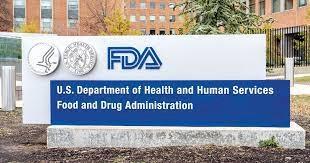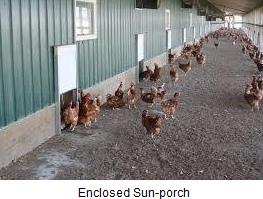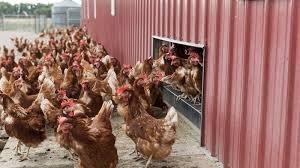 The FDA have at last issued the draft of the Guidance Document entitled, Prevention of Salmonella Enteritidis in Shell Eggs During Production, Storage, and Transportation (Layers with Access to Areas Outside the Poultry House): Questions and Answers Regarding the Final Rule. This draft Guidance Document for the industry attempts to bridge the gap between USDA proposed Organic Rule and the FDA July 2009 Final Rule on the Prevention Of Salmonella Enteritidis (SE) in Shell Eggs. The compilers of the draft Guidance Document were obliged to essentially fly in the face of epidemiologic realities in order to conform to the USDA-AMS document but in the process have compromised both their integrity and food safety. The divergence of objectives between the USDA-AMS mandating outside access for hens producing certified organic eggs and the FDA objective of suppressing SE has produced a document of questionable scientific merit representing an exercise in impracticality that will encourage subjective evaluation and conflicts during audits.
The FDA have at last issued the draft of the Guidance Document entitled, Prevention of Salmonella Enteritidis in Shell Eggs During Production, Storage, and Transportation (Layers with Access to Areas Outside the Poultry House): Questions and Answers Regarding the Final Rule. This draft Guidance Document for the industry attempts to bridge the gap between USDA proposed Organic Rule and the FDA July 2009 Final Rule on the Prevention Of Salmonella Enteritidis (SE) in Shell Eggs. The compilers of the draft Guidance Document were obliged to essentially fly in the face of epidemiologic realities in order to conform to the USDA-AMS document but in the process have compromised both their integrity and food safety. The divergence of objectives between the USDA-AMS mandating outside access for hens producing certified organic eggs and the FDA objective of suppressing SE has produced a document of questionable scientific merit representing an exercise in impracticality that will encourage subjective evaluation and conflicts during audits.
At the ou tset, the draft Guidance Document states that it does “not have the force and effect of law and is not meant to bind the public in any way”. The document as stated “should be viewed only as a recommendation unless specific regulatory or statutory requirements are cited”. This is a wishy-washy denial of responsibility.
tset, the draft Guidance Document states that it does “not have the force and effect of law and is not meant to bind the public in any way”. The document as stated “should be viewed only as a recommendation unless specific regulatory or statutory requirements are cited”. This is a wishy-washy denial of responsibility.
The first inconsistency between the FDA and the USDA-AMS is the status of enclosed covered porches. The FDA criterion for differentiating between “inside” and “outside” is whether flocks are protected from the elements and predation and whether temperature, humidity and lighting can be controlled. In contrast, the proposed Organic Rule clearly disqualifies porches as outside access. The difference between the USDA-AMS and FDA approaches reflects their diverging objectives. Implicit in the determination of the National Organic Standards Board that porches are “inside” the house is the intent to discriminate against in-line complexes with houses with enclosed porches. The FDA is evidently motivated by the objective to reduce SE infection in flocks with possible vertical transmission to consumers.
In order to produce a guidance document that satisfies the organic mandate for outside access, FDA has attempted to thread the needle with respect to measures to prevent infection of flocks. Section C of the draft Guidance Document contains questionable suggestions to reduce the risk of SE infection including:-

- “Limiting layers’ access to areas outside the poultry house to hours when wild birds or other animals are not likely to be present’. Wild birds are diurnal and raccoons, foxes, and skunks are nocturnal. What hours can a farm operator, therefore, select to reduce the possibility of introduction of SE to a flock?
- Steps must be taken to “ensure that there is no introduction or transfer of SE into or among poultry houses”. Following the initial audits of laying houses in accordance with the “Egg Rule”, farm operators were cited for apertures in walls and doors larger than two inches in diameter that would allow ingress of rodents. The organic rules mandate large openings to allow unrestricted access of the flock to the outside access. This dilemma is all too evident in the August 2002 FDA draft Guidance Document that accepts the principle of outside access.
- The draft Guidance Document indicates that houses must be disinfected before new laying hens are added if the previous flock yielded SE on an environmental test. Section C14 states that, “The requirement does not apply to areas outside the poultry house.” Given that SE can remain viable in soil for extended periods, the FDA is ignoring environmental realities. If the previous flock was infected with SE with a high proportion of hens showing intestinal colonization, it must be presumed that infection will be present in areas outside the house and especially around the perimeter of the house where hens congregate. Decontaminating the house but ignoring areas of outside access is obviously an exercise in futility. Possibly in recognition of this reality, Section C15 addresses cleaning and disinfection of an area outside a poultry house. Suggestions include tilling, that would remove vegetation required in terms of the organic rule; “Rotation of the area outside the poultry house” is clearly impractical for other than pastured flocks given the requirement of approximately two square foot per hen. The Document includes “allowing the potentially-contaminated area to lie dormant between flocks”. Given the viability of Salmonella in excess of six months on damp soil, this is also an impractical suggestion and reflects a denial of microbiologic reality included for the purposes of issuing the document, irrespective of potential risk.
Due to lack of knowledge on the part of those responsible for compiling the 2009 Final Rule and an institutional disinclination to consider professional counsel that was offered, the FDA omitted vaccination as a requirement despite considerable evidence in the late 1990s as to the effectiveness of vaccines in suppressing SE. It appears from Section E of the draft Guidance that the FDA is now aware that the industry might perhaps be using vaccines, but the document only considers vaccination against SE as “most effective when it is one part of a larger SE prevention plan”. Covering all bases however, FDA “encourages the use of an identified vaccination program that is effective for a particular farm”.
Section D1 of the draft Guidance mandates sampling of a house environment for the presence of SE but this “does not apply to areas outside the poultry house”. This is a clear indication of “don’t look, don’t find” response to the risks of outside access with respect to SE. If the draft Guidance Document required mandatory sampling of soil outside the layer house, as would be logical, the FDA guidance would be at odds with the outside access requirement of the USDA-AMS Certified Organic rule. Clearly, there is a dissonance between the two Agencies. The USDA-AMS is concerned over non-GMO ingredients fed to hens, the absence of pesticides and “organic” standards of welfare. In contrast the FDA is attempting to reduce vertical transmission of SE to consumers. This divergence leads to Guidance Documents framed to create inter-Departmental harmony rather than addressing real world problems.
The National Organic Program does not consider food safety and the FDA is avoiding responsibility as denoted in the discrepancies between the Organic Rule requiring outside access and the FDA “suggestions” in their draft Guidance Document. This disharmony would be resolved by a dedicated Food Safety Agency that would have only the single objective of protecting the food supply to the benefit of consumers.